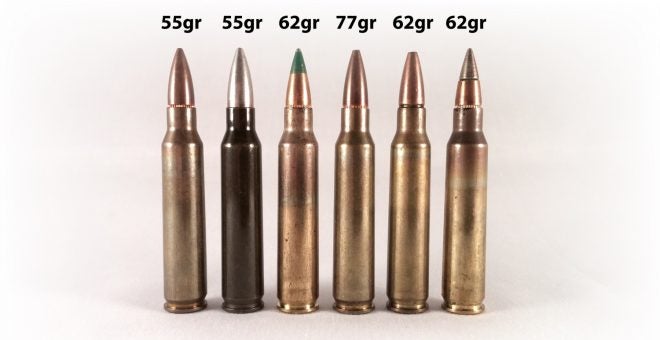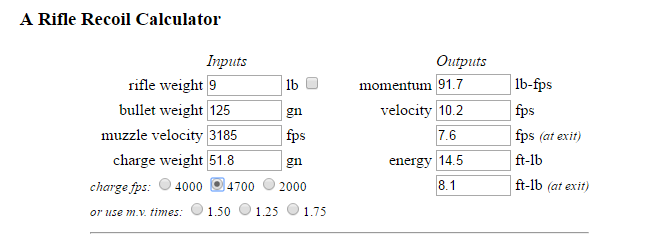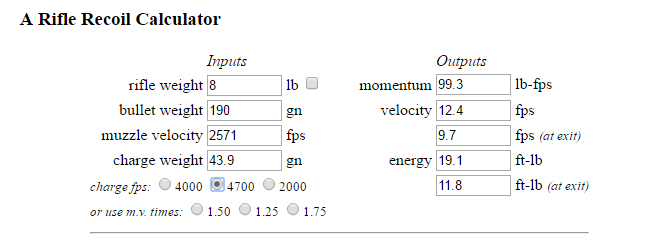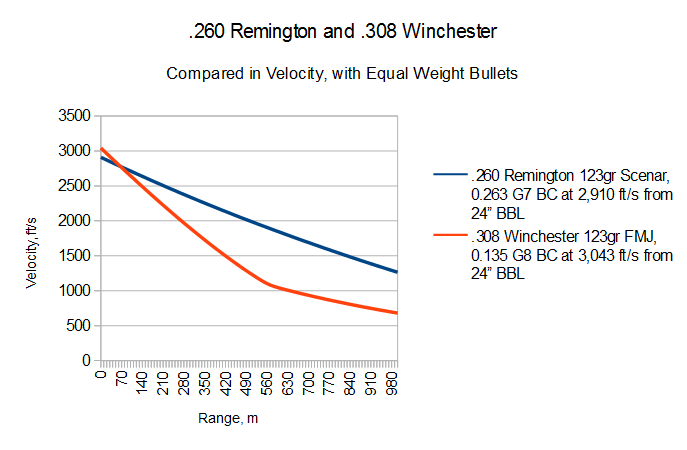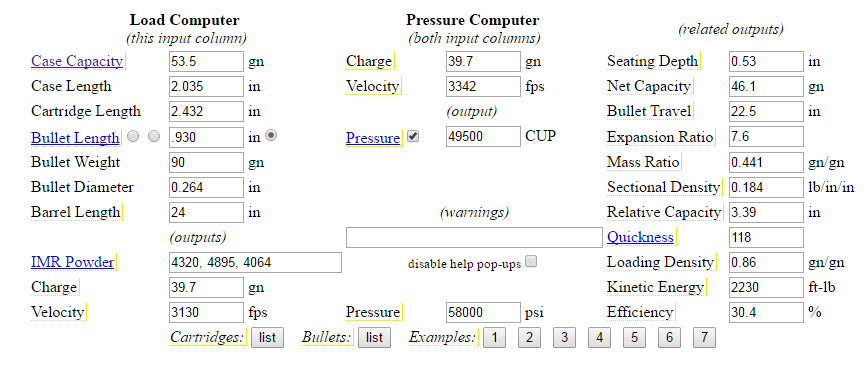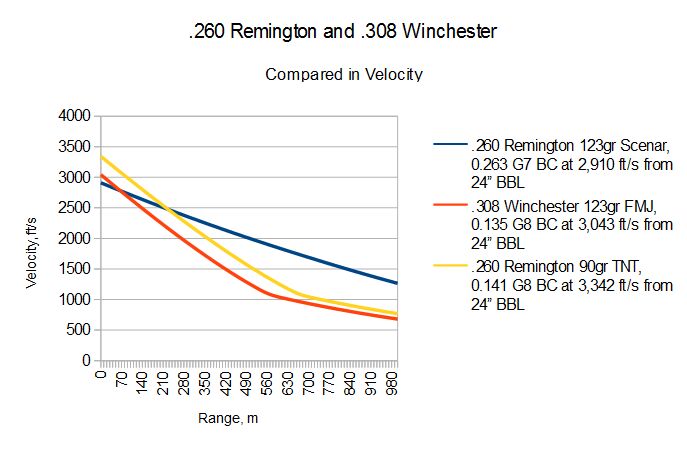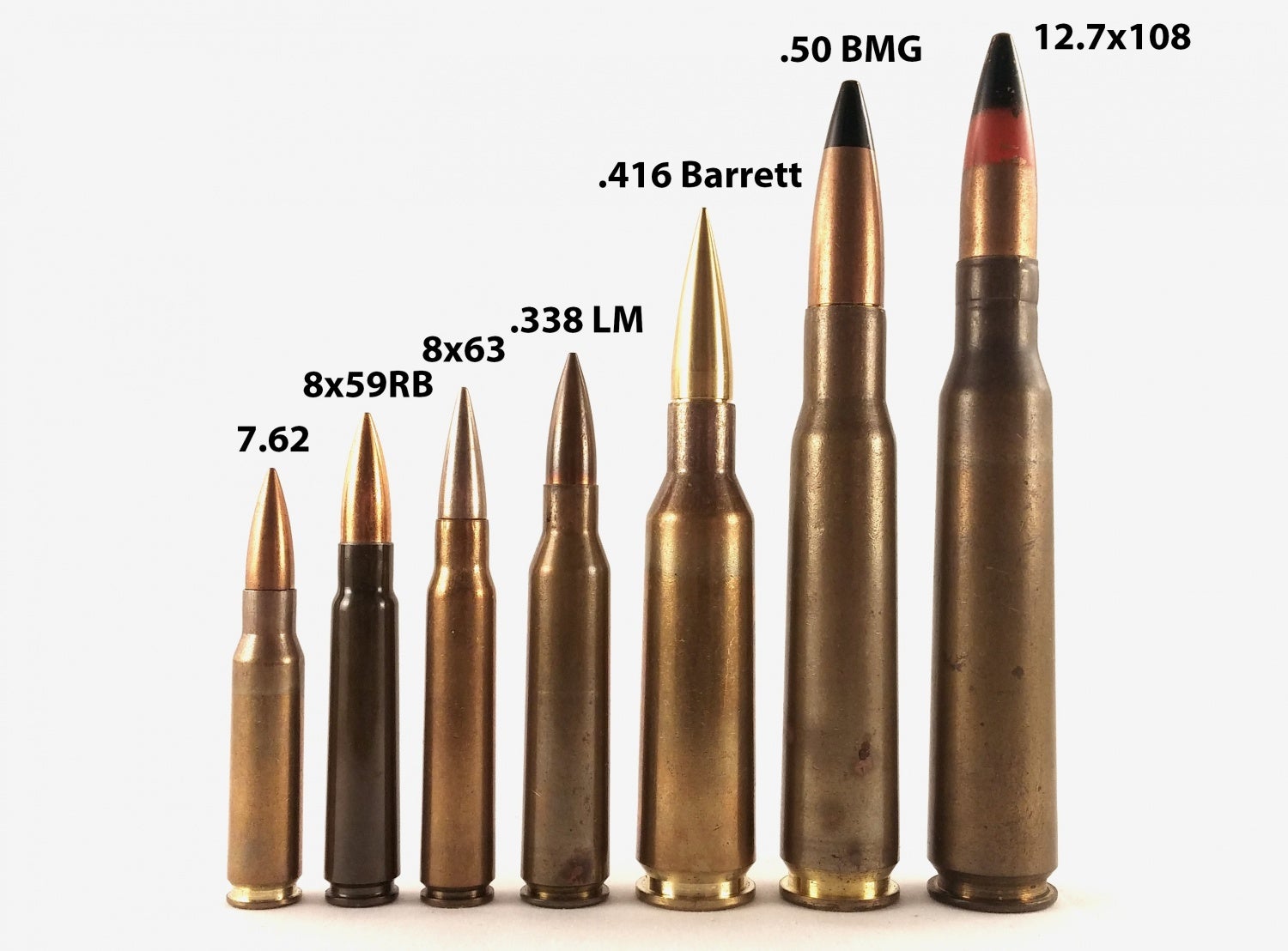In the last installment, we talked about the trade-offs involved in increasing or decreasing the projectile’s diameter (and, thereby in convention systems, the bore’s diameter as well). One of the major pieces of the equation that we left out was how changing the projectile’s mass affects the round’s performance, and it’s this that will be the subject of today’s post.
Let’s jump in where we left off, with scaling bullets. If a given bullet design (involving relative size and shape, construction, and density) is scaled up or down, say from .22″ caliber to .30″ caliber, then its weight will scale as well, according to a cube function of that increase or decrease. Due to the fact that the mass of the projectile is scaling up or down according to a cube function, and its area is scaling up or down according to a square function, then the sectional density of the new scaled bullet will go up or down linearly in direct proportion to the increase or decrease in size. For example, let’s take a 175gr FMJBT .30 caliber bullet and scale it down to .22 caliber. The sectional density of this .30″ caliber bullet is 0.264 lb/in^2, for comparison.
175 grains * (0.224″/0.308″)^3 = 67.3 grains
Now to calculate the sectional density of the new projectile:
67.3 grains / (0.224″)^2 = 1,342 grains/in^2
1,342 grains/in^2 / 7000 grains/lb = 0.192 lb/in^2
So then,
0.192 lb/in^2 / 0.264 lb/in^2 = 0.73
and
0.224″ / 0.308″ = 0.73
Showing that sectional density scales linearly. Because of this, the ballistic coefficient of the bullet also scales linearly in theory, although it needs to be noted that aerodynamics is a fickle mistress and often doesn’t play by the rules, so there may be discrepancies between BC values predicted in this way, and empirical values.
As well, if a heavier bullet is compared to a lighter one of the same caliber, its sectional density will be higher in proportion to the increase in weight. Therefore, we have two ways to increase the ballistic coefficient of a bullet by increasing its weight: To scale the bullet up (which increases the weight via a cube function for a given increase in BC), or to increase the weight of bullet either by increasing its density or lengthening it (which increases weight and BC proportionally). Obviously, increasing the weight of a projectile increases the weight of the loaded round, so if ammunition weight is a concern then the most efficient way to increase the performance of a caliber is to increase its weight without increasing its diameter. Likewise, increasing the projectile weight of a bullet, even when the charge is correspondingly decreased, increases the recoil of the round, so if recoil is a concern then the same is true.
figures taken from Hodgon’s online reloading manual
Yesterday, we talked about the effect that increasing the bore and bullet diameter of a round have on its internal ballistics, but we didn’t tackle its external ballistics. Today, we just talked about the effect of higher sectional density on external ballistics, so we might as well continue the example from yesterday to show how this works. Let’s take those same two rounds, .260 Remington with a 123gr bullet, and .308 Winchester with a 123gr bullet, on the same propellant load:
Due the difference in ballistic coefficient, the .308 Winchester loses the velocity advantage it had at the muzzle by just 65 meters. However, both of theses bullets are the same mass but different diameters, what happens if we try different masses of the same diameter? Let’s find out:
The lighter weight 6.5mm bullet does considerably better than its .30 cal counterpart at retaining velocity, thanks to its higher initial velocity (nearly 300 full ft/s higher) and even gives a useful velocity advantage at close ranges to the heavier .260 load, beating it in velocity to about 225 meters. This explains why varmint hunters choose lighter weight bullets at extreme velocities, as their targets are never more than a couple hundred yards away, and they care about striking velocity and flatness of trajectory over all else.
Even so, the heavier 123gr .30 cal bullet, despite its lower initial velocity, ends up with slightly more energy at extreme range than the 90gr 6.5mm TNT, but the 6.5mm retains slightly more of its starting energy (5.3% vs. 5.0%), making it slightly more efficient.
Finally, increasing the projectile’s weight for a given propellant load decreases the muzzle velocity (as shown by the example of the 123gr 6.5mm load versus the 90gr load), as that propellant load will produce roughly the same muzzle energy regardless of the weight of bullet it is propelling (this is not strictly speaking true, but close enough for our purposes right now). Therefore, if a high muzzle velocity is desired, then bullet weight must be kept to a minimum. If long range is desired, then this means a bullet must both be light relative to the case capacity, but also have a good sectional density and ballistic coefficient, leading to rounds with relatively small bores, large cases, and long, slender bullets, like the .338 Lapua Magnum and .416 Barrett in the image below:
Next time, we’ll be taking the conversation about projectiles a little further, and talk about bullet construction and density. Stay tuned!
Disclaimer: I cannot within the span of an article of this size cover every single trade-off involved in each “axis” of design. My hope is that by the time the series is done, most of the major trade-offs will be covered. Please be patient with me 🙂
 Your Privacy Choices
Your Privacy Choices
